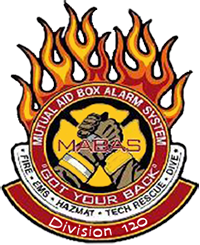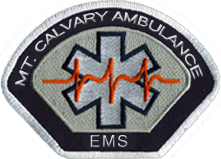999 Fond du Lac Street
P.O. Box 88
Mt. Calvary, WI 53057


Safety Procedures/Reminders
Escape Plan — Be sure all family members know what to do in case of a fire. Organize a plan and use it.
Know Two Ways Out — Be sure everyone knows two ways out of every room in your home. Practice feeling the door for heat with the back of your hand before opening with all family members. If door is warm or hot, use an alternative route of escape. Make sure all doors and locks work easily so children will be able to open them.
Have an Outdoor Meeting Place — Have a place outdoors for everyone to meet to make sure everyone is accounted for (tree house, neighbors house, anyplace at a safe distance from the house or burning structure). Be sure 911 has been called by someone.
Get Low — If it is warm and smoky, get low and stay low. Heat and smoke rise. Crawl to the nearest exit while being in contact with a wall.
Move Out Quickly — Get out of the house as fast as possible. Remember to stay low. Race your family members to your family meeting place.
If You Get Trapped — Close doors between you and the fire and smoke. Stuff cracks and cover vents with clothes, sheets, and towels to keep smoke out. Stay by the window and try to breath as much fresh air as possible. Hang clothes, sheets, or towels out the window to signal firefighters.
Upstairs — If a window is more than ten feet off the ground, use a portable escape ladder in an emergency escape. If there is no portable ladder available, hang clothes, sheets, or towels out the window for the rescuers to see. Do not jump unless there is immediate danger of being burned or overcome by smoke. Otherwise wait until firefighters arrive.
Never Go Back Inside — Be sure that everyone that is in your house knows why to never go back inside a burning house or building for any reason once they are already outside. Anyone who goes back in the burning building may not come back out. Let the firefighters go inside and get whatever or whoever is inside.
Practice Exit Drills — Practice exit drills in your residence. Make it as realistic as possible without the smoke and fire (works best at night). Someone should sound the alarm and time the drill, making sure everyone checks the doors, stays low, remains in contact with the wall and gets out as fast as possible. Then make sure everyone gets to the meeting place. Practice the primary and secondary escape route. Most fatal fires occur at night when everyone is asleep, so everyone should start the drill in the bedroom they usually sleep in. Do this frequently to make sure the children remember what to do. Find any problems with your escape routes and fix them immediately.
Smoke Detectors — Smoke detectors should be replaced every 6-10 years because the sensors get built up with vapors, smoke, and dust. Smoke detector batteries should be replaced twice per year, recommended when you change your clocks in the fall and the spring.
Carbon Monoxide Detectors — Whenever your carbon monoxide detector is sounding, get out of the house and call 911. Carbon monoxide detectors should be replaced every 6-10 years because the sensors get built up with vapors, smoke, and dust particles. Many carbon monoxide detectors are wall plug-in and they will not work when there is no power and that is likely when you may have a carbon monoxide problem.
Print Safety Procedures/Reminders
Tips for Preventing Kitchen Fires
